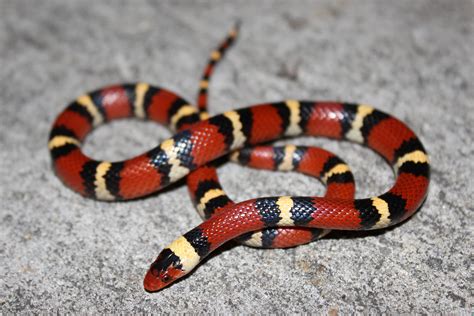Black and Yellow Snake in Florida: A Guide

Introduction
Florida’s diverse ecosystems are home to a wide array of wildlife, including several species of snakes. Among these, the black and yellow snake is a particularly striking and often misunderstood creature. This guide aims to demystify the black and yellow snake, providing insights into its identification, behavior, habitat, and the role it plays in Florida’s ecosystems. Whether you’re a resident, a visitor, or simply a wildlife enthusiast, understanding this species is essential for coexistence and conservation.
Identifying the Black and Yellow Snake

The most common black and yellow snake in Florida is the Eastern Coral Snake (Micrurus fulvius). This species is easily recognizable by its vibrant bands of black, yellow, and red. However, it’s crucial to distinguish it from non-venomous mimics like the Scarlet Kingsnake and the Florida Scarlet Snake, which have similar coloration but different banding patterns.
Habitat and Distribution

Eastern Coral Snakes are primarily found in the southeastern United States, including Florida. They inhabit a variety of environments, such as pine flatwoods, hammocks, and sandy soils. These snakes are fossorial, meaning they spend most of their lives burrowing underground or hiding beneath leaf litter, logs, and debris.
Behavior and Diet
Coral snakes are nocturnal and highly reclusive, preferring to avoid human contact. Their diet consists mainly of other snakes, including small, non-venomous species and even other coral snakes. They subdue their prey using potent neurotoxic venom, delivered through small, fixed fangs.
Venom and Safety
The Eastern Coral Snake’s venom is potent, but bites are extremely rare. These snakes are not aggressive and will only bite if handled or threatened. Unlike pit vipers (e.g., rattlesnakes), coral snakes have smaller fangs and must chew to inject venom effectively.
Conservation Status and Threats

The Eastern Coral Snake is not currently listed as endangered, but habitat loss and fragmentation pose significant threats. Urbanization, agriculture, and road mortality are among the primary concerns. Conservation efforts focus on preserving natural habitats and raising public awareness about the importance of these snakes in maintaining ecological balance.
Coexisting with Black and Yellow Snakes
Living in harmony with Florida’s wildlife requires respect and understanding. Here are practical tips for coexisting with coral snakes:
- Avoid Handling: Never pick up a snake unless you are certain of its species.
- Maintain Yard Safety: Keep grass trimmed and remove debris where snakes might hide.
- Educate Others: Share knowledge about snake identification and behavior to reduce fear and misconceptions.
Myth vs. Reality
| Myth | Reality |
|---|---|
| Coral snakes are aggressive and attack humans. | They are extremely shy and bite only when threatened or handled. |
| All black and yellow snakes in Florida are venomous. | Only the Eastern Coral Snake is venomous; mimics like the Scarlet Kingsnake are harmless. |
| Coral snake venom is always fatal. | Bites are rare, and with prompt medical treatment, fatalities are extremely uncommon. |

Frequently Asked Questions (FAQ)
What should I do if I see a black and yellow snake in my yard?
+
Observe from a safe distance and avoid disturbing the snake. If it’s a coral snake and you’re concerned, contact local wildlife authorities for assistance.
Are black and yellow snakes in Florida endangered?
+
The Eastern Coral Snake is not currently endangered, but habitat loss is a growing concern.
How can I tell if a black and yellow snake is venomous?
+
Use the rhyme “Red touches yellow, kill a fellow; red touches black, venom lack” to identify the venomous coral snake.
Do coral snakes chase people?
+
No, coral snakes are not aggressive and will only bite if directly threatened or handled.
Conclusion
The black and yellow snake, specifically the Eastern Coral Snake, is a fascinating yet often misunderstood creature in Florida’s rich biodiversity. By understanding its behavior, habitat, and importance, we can foster a safer and more respectful coexistence. Remember, these snakes play a vital role in maintaining ecological balance, and their conservation is essential for the health of Florida’s ecosystems.
Final Thought: Appreciate from a distance, educate yourself and others, and always prioritize safety when encountering wildlife.